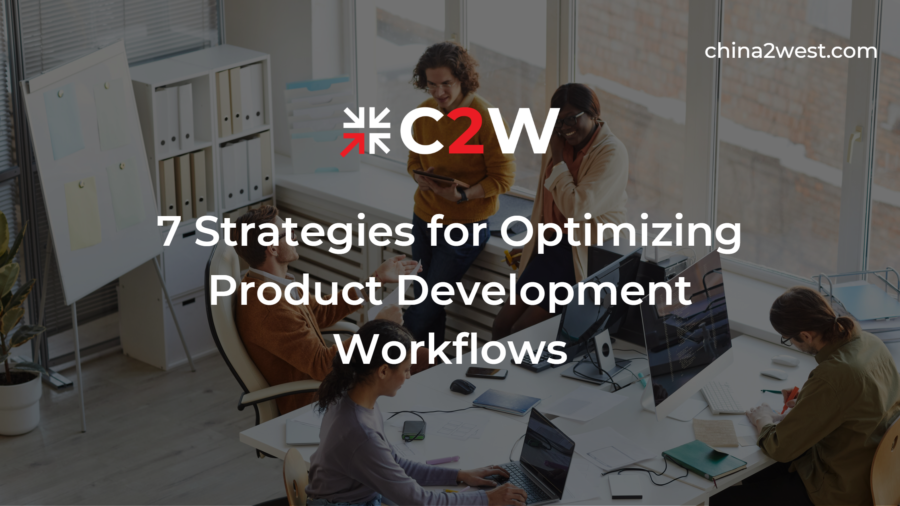Product development is one of the most essential activities a successful business needs to excel at. There is a reason that businesses are willing to spend so much to create a fantastic product. In fact, businesses around the United States spend more than $3 billion every year just on product design services.
Many company leaders have developed effective strategies for their product development processes. At the same time, the more effective their own strategies are, the more they might tend to neglect the insights of others. If you want to take your product development workflow to the next level, then it can be valuable to consider the strategies that have worked for others.
On top of that, there is a lot you can do during the product development process to integrate the feedback from your customers and others. So what can you do to improve your product development workflow?
Read on to learn all about these top strategies for optimizing your product development!
The Importance of the Product Development
It can be helpful to know when it is important to double down on your product development workflow. If your customers are changing their preferences or behaviors, you may need to adapt to keep up.
The same can be true if your competitors are starting to take away some of your market. On the other hand, you might want to dive deeply into product development when you discover an untapped opportunity. New technology or market circumstances can provide a lot of value for the first company to update its product development accordingly.
So what can you do to make sure that your product development workflow is ready to respond to changing circumstances?
1. Separate Creation and Polishing
One of the hardest parts about product development is that it requires you to create something original. Creative people of all kinds struggle to generate outstanding new creative ideas. However, they have also learned about principles that can help creativity flow.
One of the most important things to do is separate when you create new ideas and when you polish them. Sometimes, the best ideas turn out to be ones that did not seem very impressive in their first form. However, if you are so focused on detecting flaws in your ideas, then it will be much harder for you to generate new ideas.
As a result, make sure to devote some time to only generating as many new ideas as possible. Give yourself the freedom to come up with bad ideas as well as speculative and unproven ones.
This freedom will allow you to create a longer list of possible adjustments to your product development. You can always return your focus to polishing and removing flaws later on.
2. Gather Ideas From Your Customers
Another way to generate creative ways to improve your products is to interact with your customers. In most cases, people who understand the product better will tend to have better ideas about how to improve it.
Your customers may lack the specialized knowledge and expertise that you and your co-workers have. However, they also have a different perspective. That can help them come up with ideas that might not occur to you.
On top of that, if there is something that your customers care about a lot, that can be a major clue as to how you can improve your product. Even if a customer complaint does not make sense in the light of your superior expertise, you might still want to listen and look for ways to integrate the spirit of what your customers care so much about.
3. Find a Product Development Company in China
Many people get help with their product development in China. Product development companies in China specialize in helping companies generate new product ideas and execute them.
Working with a company in China can also provide you with a valuable outsider perspective. These companies have their own wealth of knowledge and expertise that may not overlap with your own.
4. Test Ideas Early and Often
Don’t wait until your product is polished and completed before you get feedback from customers.
Instead, test your ideas as often as possible. This will allow you to adjust your trajectory more often. That can save you a lot of wasted time.
5. Analyze Customer Reactions
Don’t pay attention only to the data from your customers’ feedback. Listen to your customers as individuals and trust your gut to tell you more than what the data can.
You don’t have to favor your gut over the data in your final decision. However, accounting for both decision processes can help you create better products.
6. Change Your Commercialization Philosophy
Sometimes, it is best to focus on creating the best product possible, even if it is less efficient. In other cases, cutting expenses is the most effective way to increase your profits.
Whichever of these strategies you have been using during the commercialization aspect of your product development process, consider switching to the other. It may have low-hanging fruit waiting for you to pluck!
7. Shorten Your Product Development Life Cycle
Sometimes, you don’t need to put all of your efforts into making this particular product as appealing to customers as possible. If you can speed through your product development life cycle, then you can create a wider variety of products. Sometimes, that is the best way to find out which products customers will actually respond to the most.
Follow the Best Tips to Optimize Your Product Development
Considering how high the stakes are when it comes to effective product development, it is essential to stand on the shoulders of giants and learn from the insights of others. People have spent a long time figuring out how to optimize product development processes. Depending on your situation, working with a company that specializes in this might be the right strategy.
To learn more about how you can find the best help for your product development, reach out and get in touch with us here at any time!


